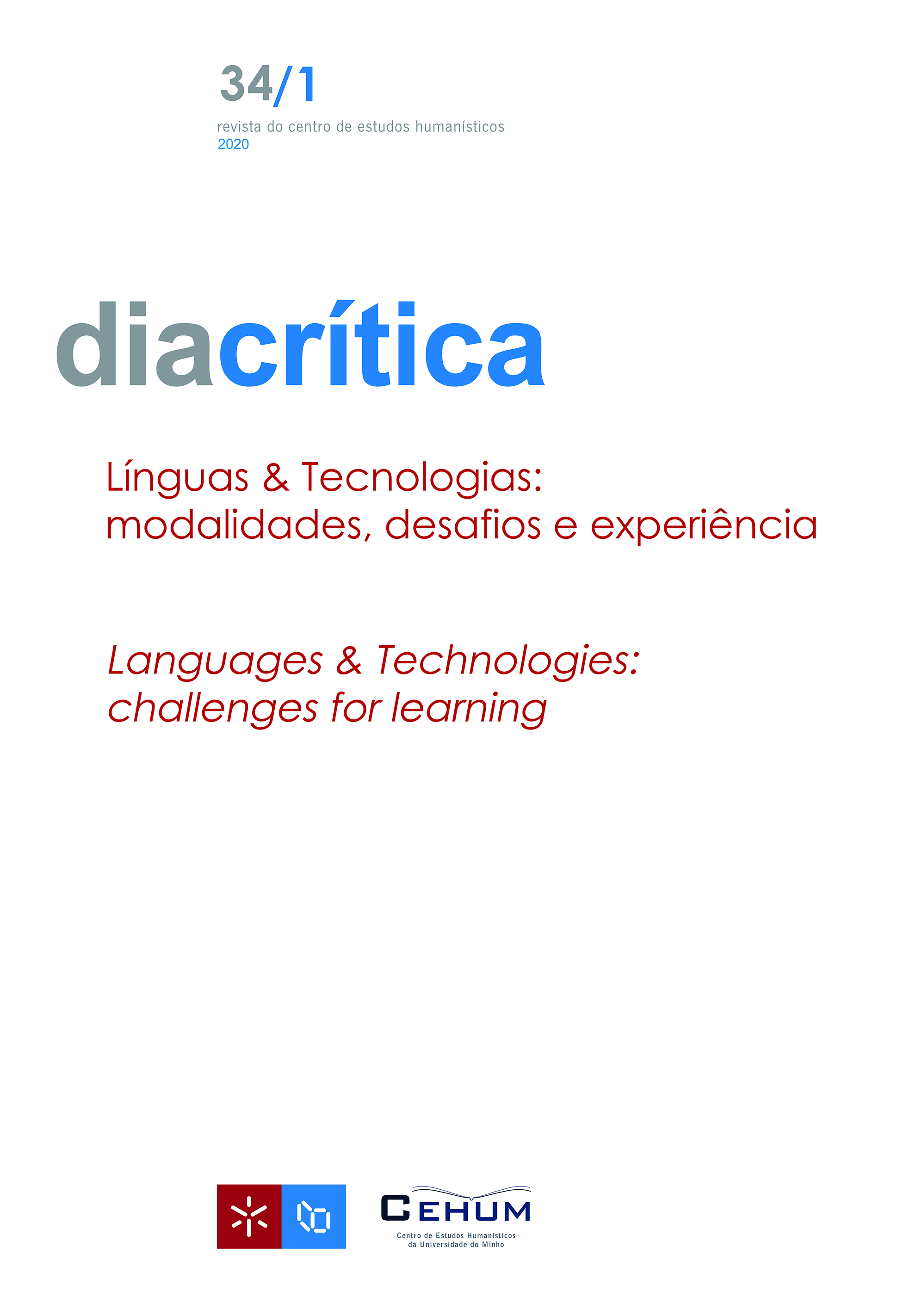Uso de corretor ortográfico em produções textuais informatizadas: Uma análise processual comparativa
DOI:
https://doi.org/10.21814/diacritica.4974Palavras-chave:
Corretor ortográfico, Produção textual informatizada, Educação tecnológica, Revisão textualResumo
Num contexto de crescente presença tecnológica em cenário educacional, o objeto recortado nesta pesquisa foi o uso que estudantes de graduação fazem do corretor ortográfico em processadores de texto. Propôs-se a calouros dos cursos de Engenharia e de Letras Português, da Universidade Tecnológica Federal do Paraná (UTFPR), no Brasil, a elaboração de um texto, no processador Word, tendo disponível o corretor ortográfico em modo não automático. O processo de escrita foi registrado por meio de softwaresde gravação de tela. Tomaram-se como indicadores específicos para a análise o fato de os estudantes terem corrigido as marcações da ferramenta com base nas sugestões dadas pelo corretor ou em seus conhecimentos, o número de inadequações gráficas ou sintáticas e os erros mecânicos. Constatou-se elevado grau de confiança no corretor, o que pode prejudicar, especialmente, a etapa de revisão textual. Houve, entretanto, casos de usos consideravelmente contextualizados. Em comparação, concluiu-se que o grupo de Letras se destacou por apresentar um nível de consciência maior ao usar a ferramenta. A pesquisa discute, nesse contexto, a imbricação entre linguagem e tecnologia (Cupani 2011; Feenberg 2002; Pinto 2005); as revoluções tecnolinguísticas (Auroux 1992; Coulmas 2014; Fayol 2014; Haas 1996); e a educação em ambiente tecnológico (Sibilia 2012).
Referências
Antunes, I. (2005). Lutar com palavras: coesão e coerência.São Paulo: Parábola Editorial.Auroux,S. (1992). A revolução tecnológica da gramatização.São Paulo: Editora da Unicamp.
Coulmas, F. (2014). Escrita e sociedade.São Paulo: Parábola Editorial.
Cupani, A. (2011). Filosofia da tecnologia: um convite.Florianópolis: Editora da UFSC.
Fayol, M. (2014). Aquisição da escrita. São Paulo: Parábola Editorial.
Feenberg, A.(2002). Transforming technology: a critical theory revisited.New York: Oxford University Press.
Gnandesikan, A.(2011). The writing revolution: cuneiform to the Internet. Nova Jersey: Wiley-Blackwell.
Haas, C. (1996). Writing Technology: studies on the materiality of literacy.Mahwah: Lawrence Erlbaum Associates.
Lopes, L. P. M. (2006). Por uma linguística aplicada indisciplinar.São Paulo: Parábola Editorial.
Moreira, S. A. (2008). O corretor automático substitui o Revisor Profissional? Revista Texto Livre, 1(1), 13–17.Pinto, A. V. (2005). O conceito de tecnologia. Rio de Janeiro: Contraponto. DOI: https://doi.org/10.17851/1983-3652.1.1.13-17
Sibilia, P. (2012).Redes ou paredes: a escola em tempos de dispersão.Rio de Janeiro: Contraponto.
Downloads
Publicado
Como Citar
Edição
Secção
Licença
Direitos de Autor (c) 2023 Thalia de Oliveira Kasiorowski, Paula Ávila Nunes

Este trabalho encontra-se publicado com a Creative Commons Atribuição-NãoComercial 4.0.










